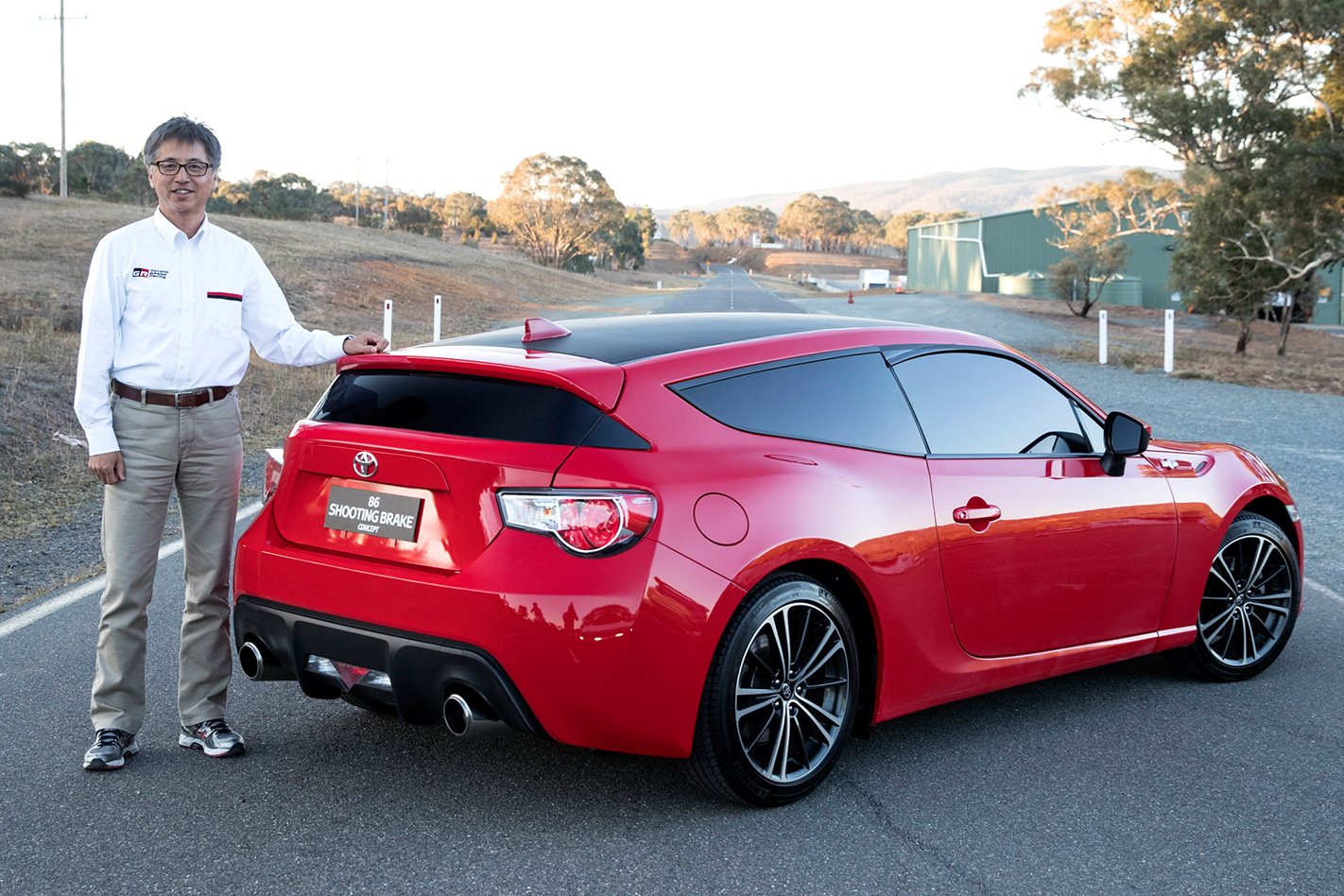Engineers rarely receive a rockstar reception at automotive events.
Celebrity ambassadors often schmooze glossy crowds, as do skivvy-clad designers, but rarely do quietly-forthright engineers get a look in. Toyota 86 chief engineer Tetsuya Tada is one of those personalities – and he is front and centre in the spotlight.
It has been four years since the 86 (and its Subaru BRZ twin) debuted. The $29,990 rear-drive Toyota coupe passed 10,000 local sales two years ago – with volume behind only Japan (39,000) and the US (35,000) – and by mid-2016 the ‘Toyobaru’ duo had doubled that tally.
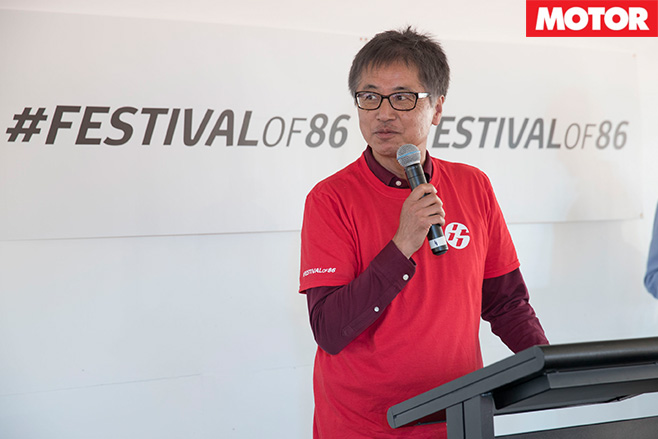
Armed with a marketing budget to make most manufacturers blush, both the festival and the 86 amateur race series, launched on the same day, are Toyota Australia’s paid celebration of what is still its only sports car.
Despite promises from company president Akio Toyoda that the brand would bring more fun-to-drive cars to market, none have yet been forthcoming. Nothing has changed with the 86, either. A facelift – attacked by keyboard warriors for raising outputs by just 4kW/9Nm – is due in the third quarter.
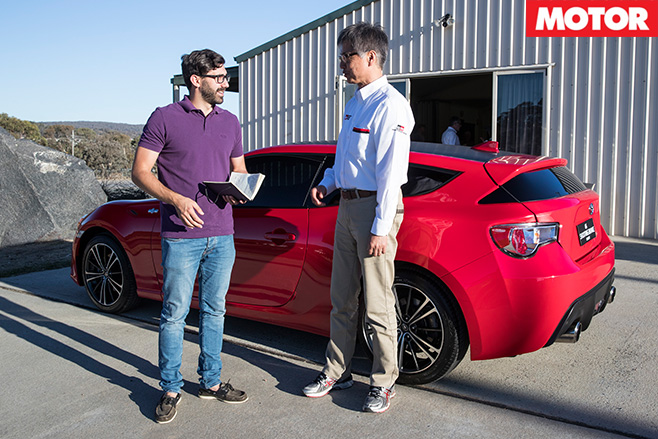
“It will definitely be above fans’ expectation. If you supply what all the fans really want nobody gets really surprised or impressed, so wait and see, we will provide something that will be really [a] surprise.”
Tada-san laughs when reminded of his previous comments that turbocharging the 86 would be the “easy answer” – and that stance resolutely remains. But what about drawing upon – gasp! – Toyota’s hybrid technology for the next model? “Not necessarily we would be saying hybrid as such, hybrid could be part of the answer but if [we] provide just a normal hybrid it makes no-one surprised,” he responds cryptically.
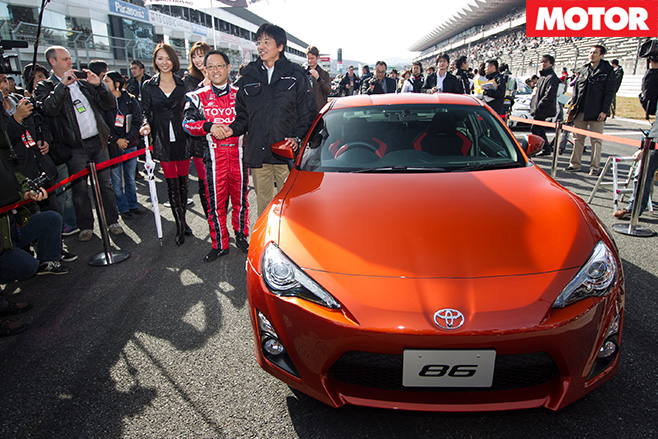
Tada-san lights up at the suggestion that an electric motor could be used as a power ‘boost’ – something popular among today’s high-end supercars. “Oh yes, yes! It is a good idea but it is not as surprising as what [we] want to make,” he teases. “Not necessarily just the engine but [with] the whole package as a new-generation 86 we want to make everyone go ‘wow’.”
There is a roll-call list of improvements engineers are aiming to make with new models and Tada-san understands them well. He leans back and grins then answers in the affirmative when asked if he’s driven the new Mazda MX-5, a car that has achieved a 1000kg kerb weight. The current 86 weighs 1200kg-plus.
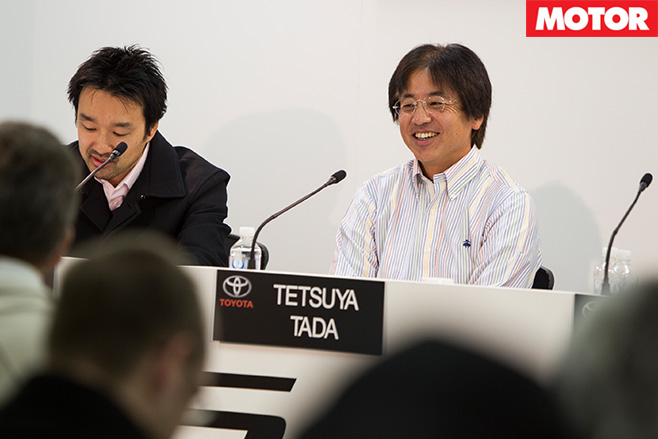
The inference is the research conducted into kerb weight reduction for mainstream cars will aid future sports car development. Tada-san confirms that the “big” drop in body weight would help the next 86, but could the second generation hit the magic tonne? “I will try my best,” he says, grinning.
Making the coupe smaller, however, is clearly not the simple fix. “The 86 maybe can go slightly smaller but it wouldn’t have much of a less weight or make it less cost,” he explains. “At the time when we developed the 86 like that, that was the best balance between cost and [practicality of] usage.
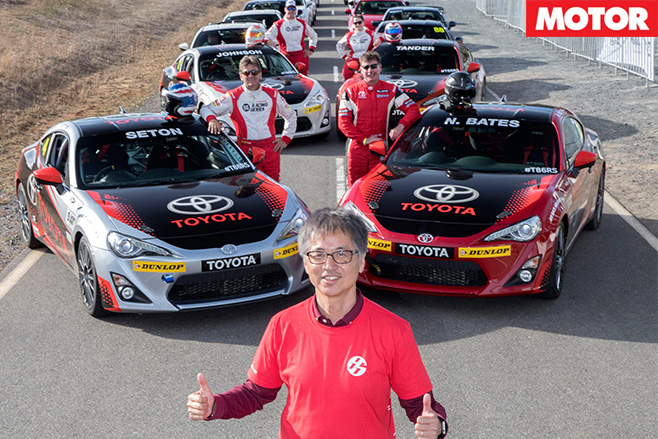
“The lighter one [sports car] is easier to make. The smaller one automatically you think would be easier to make because it’s smaller, but it’s not that way because it still needs to be safe for accident so all that strength will still be demanded. It remains same [cost]. It’s not that easy to make that smaller car.
“Even the president of Toyota is not considering making a huge profit throughout the 86, but if the profit disappear totally, it is very hard as part of the company policy to [make] the same style. So as soon as they are making even a little bit profit [we] can continue.”
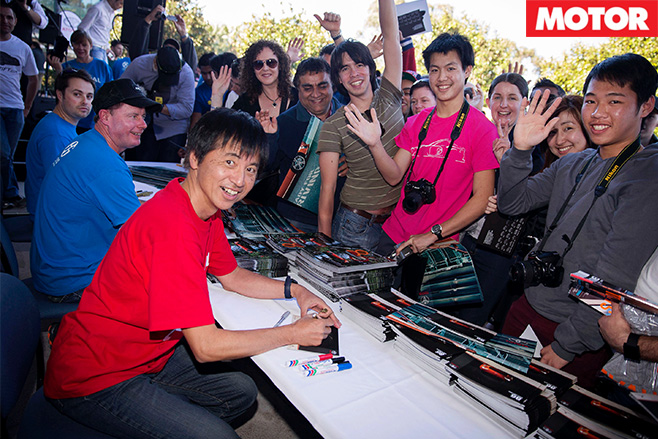
“Continuation is something [important] because in the past Toyota make so many sports car and then when the profit goes down they finished every single time and didn’t continue,” Tada-san tells.
“When you think about the user, we should continue. At this current time we are making a profit, so we will of course continue making the 86 and then consider a family. But if we release so many variants of the family that will value down the original. [We should] continue making the original first.”
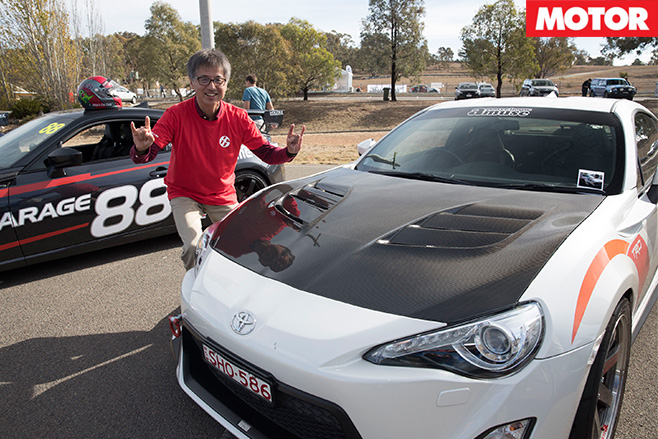
In quick quips between his rockstar treatment at the festival he admits he would love to build a hot-hatch and hopes the Yaris WRC car would be an indicator of things to come. Ideally Toyota should have its own sports division like Renault Sport or AMG, too – and not necessarily TRD.
But we finish with the big gun: Supra, when is it coming? “Ah, Supra!” he exclaims, visibly excited by the project. “It’s very hard to tell when the Supra will be produced, but regarding the 86 we weren’t really focused on the speed or the power [but] on simply so much fun to drive. When we consider the 86 so many users consider it is not enough power, it is not enough speed, because they want to focus on that.
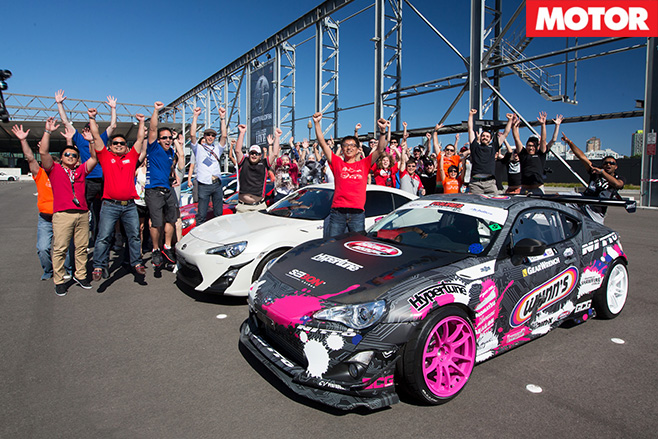
“[It will be] top of Toyota sports,” he says. “When we produce the 86 so many people ask [about] the rival, but [I] never think about what is the rival. As soon as you make a normal car there is always a rival to compare the ability, but when you talk sports car it’s not that way. It is more a self satisfaction that works out better than putting a target on the competitors.”
But while excess power and indulgent speed – a bit like the celebrity rockstar lifestyle – have their place, the values of this softly spoken engineer still remain crystal clear. “[My] feeling of what is a sports car is 100 per cent reflected into what is the 86,” he says, pausing momentarily. “It is fun to drive.”

